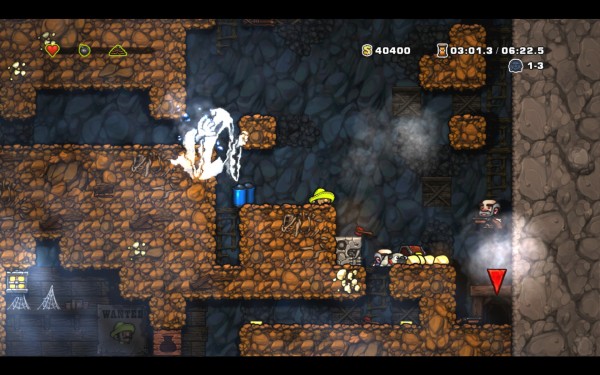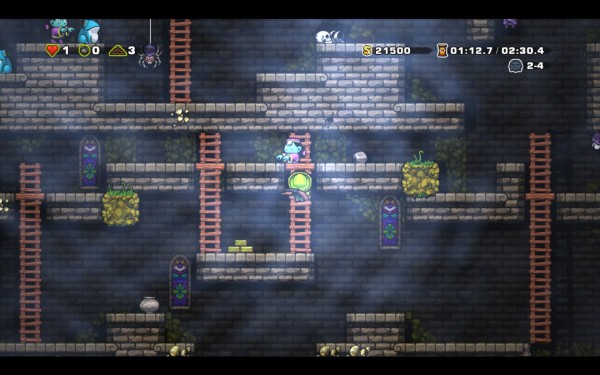There’s something to be said about fighting losing battles. Maybe it’s that the cause more often than not seems more valiant than that of the victor, seeing how long you can hold off defeat before you’re finally overwhelmed. Perhaps it’s because you know in the far reaches of your mind that there’s a faint light at the end of the seemingly-neverending tunnel, and you just have to soldier on and press forward, just to reassure yourself that it’s not just misplaced time and effort, better spent elsewhere. This is how I feel when I play Spelunky.
Released initially for free in 2008, before getting a facelift and digital retail release in 2012, Spelunky puts you in control of a nameless adventurer as navigating a series of levels across different themes, collecting treasure as you descend deeper and deeper into treacherous caverns. Completing the game isn’t impossible, in fact it’s quite doable, however, the margin for error is extremely minimal if you’re not willing and prepared to be careful.
Needless to say, I’ve been to both sides of this lately whilst playing. One one hand, I’m more than prepared to just arrive, get loot, leave, with a total disregard for personal safety. Sometimes it gets me a reasonable distance, before I get too headstrong, think I can jump a rather sizeable gap, and subsequently plummet to my demise upon some spikes. On the other, I’m stopping every few seconds to reassess my spatial awareness, observe where enemies are below my ledges, calculating how and where they’ll move to, so I can use them to cushion larger drops in order to avoid both fall damage, and the necessity to use valuable resources such as climbing ropes to aid my descent.

Frustration is what the game deals with in spades. I’ve sunk some 16 hours into Spelunky, playing in quick bursts for maybe 2 or 3 attempts a day. For every playthrough I have that makes me think that I’m achieving something or making some form of progress, there are at least 10 more preceding it where I fall victim to rookie mistakes. Much like the unnamed Spelunker, it’s the thrill of the chase that keeps me coming back for more, that “just one more try” feeling that lends itself to this format so easily. Because playthroughs start at the very beginning every time — unless you find and help the Tunnel man at 4-stage increments and elect to help him in the creation of shortcuts — it feeds on the red mist, and more often than not, it’s over just as quickly as it began. This leaves you more inclined to dive straight back in in order to avenge your untimely demise. This lends itself well to quick-burst gaming, trying only a handful of times so as to not let your emotions get in the way of your focus, and why the game is such a natural fit for the PlayStation Vita.
I’ve been playing the Daily Challenge on Spelunky almost every day for about a month now, and it’s a great way to keep me coming back to try again. Every 24 hours has a different seed – and therefore a different leaderboard, and the notion that I could be at the top of my friends’ scoreboard, even if just for an hour or two, definitely speaks to my competitive side. It forces me to be both good enough to make it all the way through to the end, a feat I have so far failed to achieve, but at the same time giving me a level playing field so I can have some sort of parity.

The fascination with challenging games and rogue-likes seems to have really taken off in gaming circles within the last year or two, and after being bitten by the Spelunky bug, I totally see why. There’s only so much you can tolerate of games that hold your hand every step of the way, or suggest dropping difficulty if you fail the same section repeatedly, or dare I say offer shortcuts, bypasses and cheats in the form of micro-transactions. For a game to be unapologetic about your failure and force you to try everything again, and even perhaps throw something different into the mix in the process — in this day and age, it’s a ballsy move, but there’s a rapidly widening audience for games like these, so why not go for it? Perhaps it’s the rose-tinted nostalgia glasses hearkening back to the days of my youth, where games didn’t have save points, and had to be completed in a single sitting, but I’m liking this direction gaming is taking, and long may it continue.
